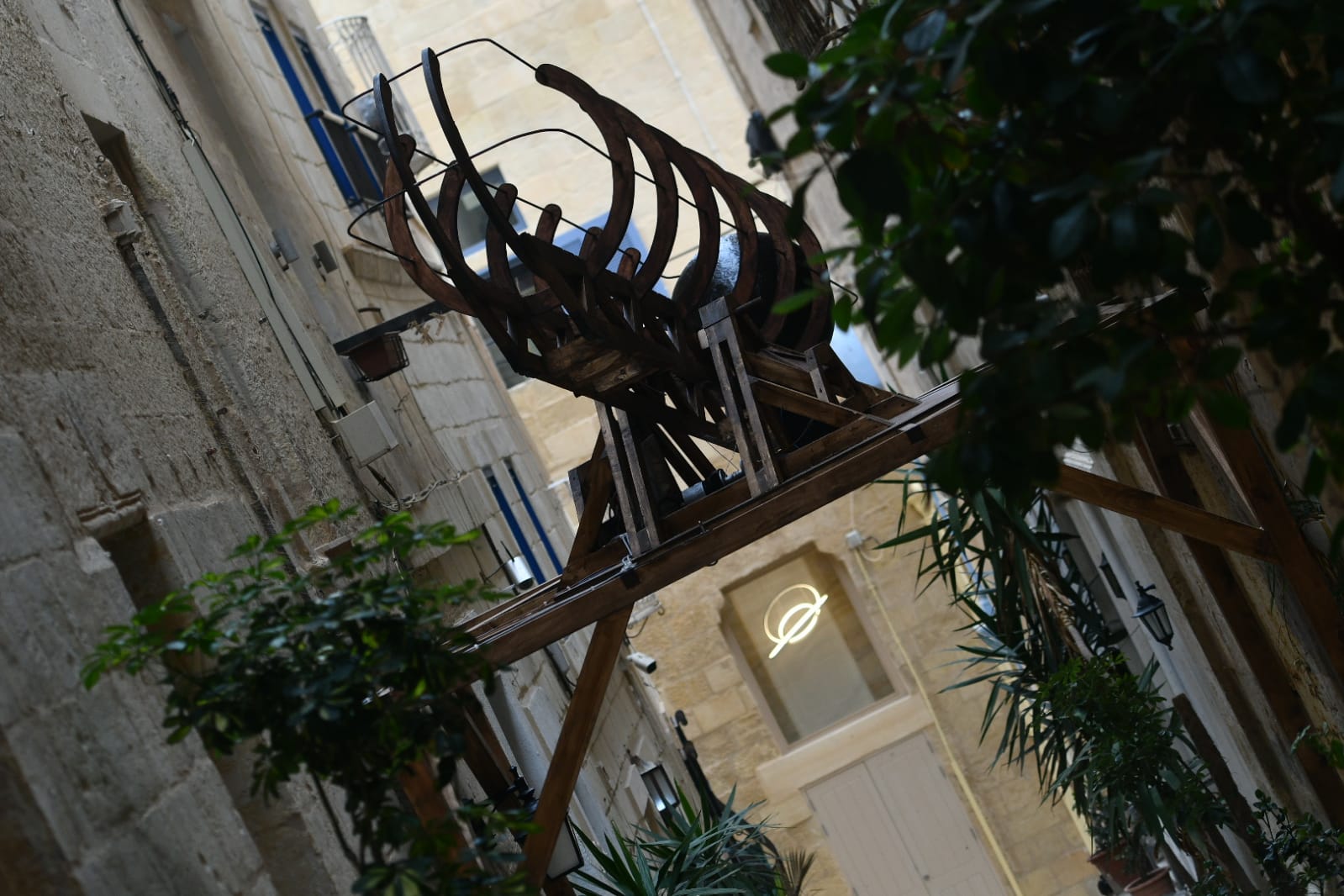Seesaw is a kinetic sculpture derived from the notion of surveillance and the element of play. The sphere and its modes of movement are recurring elements in the games played in the streets throughout the years.
The sculpture’s position and height hints at the experience of being observed from the balconies above.
In Aaron Bezzina’s words, the different elements including the ring, the ball and the sphere represent the different games that used to be played; ball, bingo, karts with ball races, games uphill or downhill and the high buildings…
This intervention reflects one of the nine curatorial thematics of fuse, Synergy. The streets of the area surrounding the Old Abattoir are witness to children’s games such as noli, erbgħa kantunieri, ball-rails, logħob bil-ballun taċ-ċarruta etc. – everyday games reminiscent of villages where families interacted in the streets, day and night.
The fountain at the focal point of the Biċċerija was used as a meeting point and children either raced down the streets to the fountain or played games such as erbgħa kantunieri, which involved placing an object in between the four corners of the intersecting streets, with children racing towards it. Children asked their mothers for drapes to make cloth balls, whilst the popular Mari tal-Ħanut, crafted toys such as weighing scales and wind vanes from tins for children to share and play.
Curated by Elyse Tonna, fuse is a collaborative visual arts and research project which explores and uncovers aspects of the intangible history and the intangible stories of the area.
